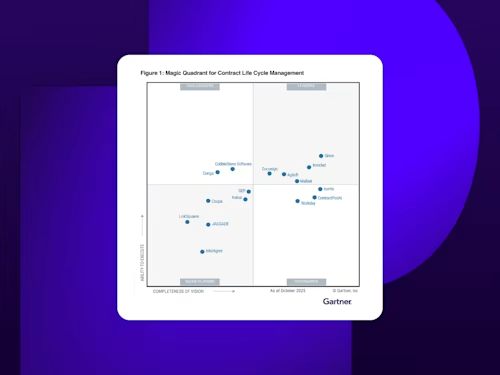
Our product team is dedicated to making eSignature adhere to accessibility guidelines from project conception to final product.

Accessibility is part of our core mission, which is to simplify and accelerate the way organisations and individuals come to agreement. Our product Docusign eSignature helps enable people with disabilities to sign or send documents in a manner that can make an incredible difference in their lives at critical moments, such as securing a new job or buying a home.
Our product team is dedicated to making eSignature adhere to accessibility guidelines from project conception to final product. But we don’t just want to meet these broad guidelines; we continuously make improvements to create an enjoyable and reliable experience for people using screen readers or any assistive technology.
This Global Accessibility Awareness Day, we wanted to highlight some key moments in our ongoing journey toward making our product accessible to all.
Docusign eSignature WCAG 2.1 Level AA compliance
Docusign’s eSignature signing experience adheres to and continually tests for U.S. Section 508 and WCAG 2.1 Level AA requirements.
eSignature is accessible to our customers (and their customers) by supporting:
Compatibility with common screen readers and other assistive technology
High-contrast settings for low vision users
Keyboard-only input
See a screen reader utilising our signing experience in action in this video:
We also take the following measures to ensure accessibility of Docusign eSignature:
Include accessibility throughout our internal policies
Provide continual accessibility training for our staff and appoint accessibility champions through the organisation
Employ accessibility quality assurance methods
Retesting of Docusign products and digital properties and an accessibility plan for long-term continuance
Becoming independently verified with accessibility experts
As we built these initiatives throughout our organisation, we also acknowledged that testing and verifying the accessibility of our products internally is just a first step. Our assertion of our adherence should be accompanied with an assessment from reputable, independent third-party specialists and people with disabilities. The gold standard we wanted to achieve next was independent verification.
For that, we partnered with an accessibility solutions provider called TPGi - The Accessibility Experts. TPGi did an initial round of testing, after which our development and design teams needed to make some fixes. After retesting, TPGi was able to complete our Voluntary Product Accessibility Template and verify the accessibility of eSignature.
Scaling accessibility with our internal design system
At this point, we also recognised the need for all of our products and experiences to be accessible, while maintaining a standardised look and feel.
To help all teams at Docusign create and implement accessible experiences and products, we’ve built accessibility right into our internal design system. A design system is sort of like a repository of code and design elements for things like pop-up boxes or other modules for your website or product. These are accessible components that essentially come “out of the box” for our developers to develop products faster. This methodology has become increasingly common and is used by many large organisations like IBM, Microsoft and even the US government.
Having a design system that integrates accessibility helps us develop accessible experiences faster, provide a better user experience, and fix issues across all experiences in one place. We are shifting our thinking to identify issues much earlier in the design phase to ensure that our customers do not encounter them in production.
What we learned on our journey
One major learning from our accessibility journey was that truly accessible experiences require organisational change, not just quick bug fixes. The whole organisation needs to be committed to accessibility, not just development and product design teams. To bring the organisation along, we created training programs, video series and internal documentation, like accessibility checklists.
Our other big learning has been that to maintain accessibility, you must always be looking ahead and planning for the future. Once we reached a high level of accessibility, it became mission critical to maintain that high level. To do this, we have three focus areas:
Look ahead: Always be aware of upcoming WCAG guidelines, so that we can start doing testing and improvements ahead of time.
Test, test, test: Implement automated testing to show progress over time and be proactive in addressing accessibility issues.
Proactively engage our organisation: Strive to ensure every new hire has some baseline knowledge or training on accessibility.
To learn more, check out the Docusign Accessibility Statement.
Curious about building, designing or implementing accessible experiences with Docusign? We’re hiring - check out our current openings.
Docusign IAM is the agreement platform your business needs



